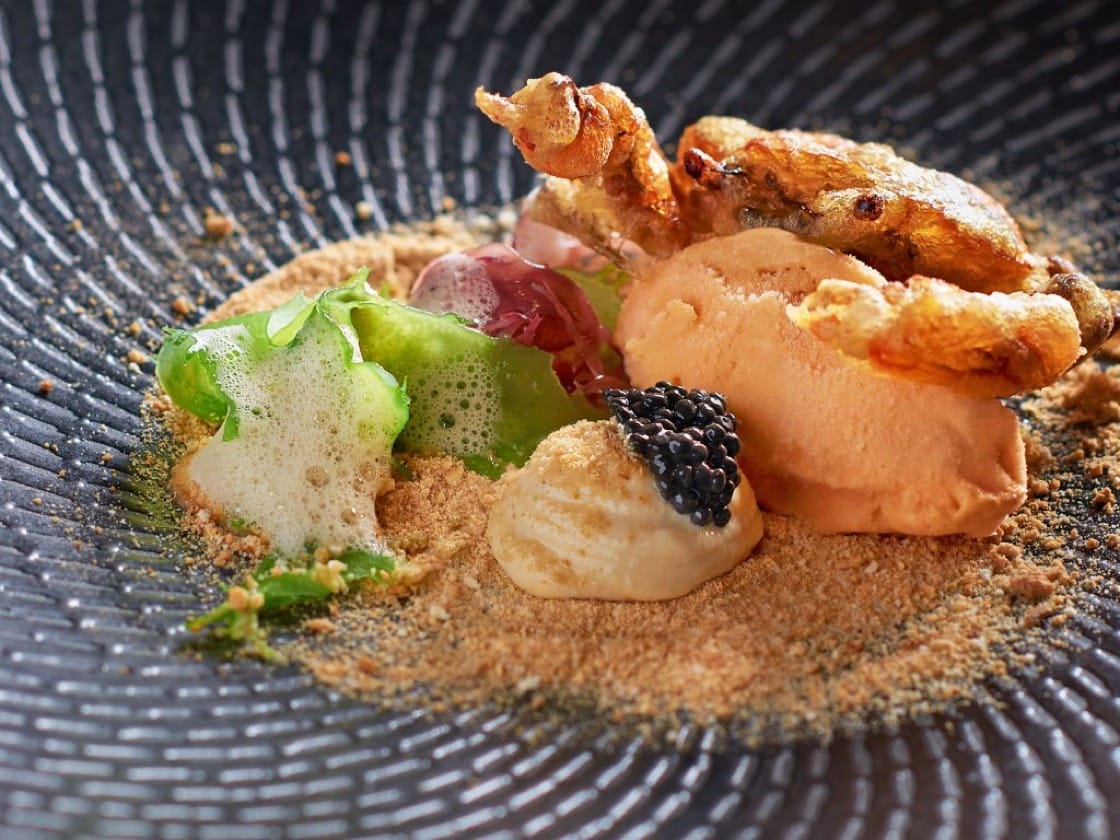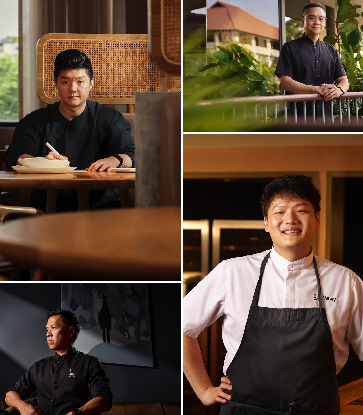

The dish, simply named Local Wild Caught Crab, reflects the chef’s new expression of Singapore cuisine that puts a spotlight on Singapore’s produce. Rather than riffing off hawker dishes and elevating them for fine dining, he now builds on local ingredients and weaves in old traditional recipes and inspiration from the flavours of his growing up years in Singapore.
The Dish’s Dark Roots
The idea for a savoury ice cream first took root after he decided to leave his career in the finance industry in 2012 to pursue his culinary ambitions. While working as a private chef, he toyed with the notion of opening a dine-in-the-dark concept restaurant that would have an element of surprise in every dish. The dishes needed to have flavours that were familiar to the local palate, yet surprise diners with unexpected textures and temperatures when their sense of sight was taken away. “I thought, what could be more familiar than chilli crab? It’s something I have fond memories of eating at seafood restaurants along East Coast Park, outdoors with a seaside view.”

Though his plans for the dine-in-the-dark restaurant eventually fell through, Han kept the chilli crab ice cream when he opened mod-Sin restaurant Labyrinth in Neil Road in 2014. The debut version was served on a round dark plate: deep-fried soft-shell crab and mantou crumbs alongside three quenelles — crab mousse, chilli crab ice cream and a dollop of caviar.
“Don’t ask me why I put caviar,” Han says laughing. “It was the idea that since it was a fine-dining restaurant, I had to put caviar.”

The chef’s culinary philosophy has certainly evolved since the restaurant’s early days and many of these changes are mirrored in the various iterations of his signature dish over the years. He recalls when the transition of his mod-Sin philosophy to its current produce-driven one first began — the changes are reflected in his chilli crab dish.
“I deconstructed the crab so the shell became chips and I sautéed the meat but kept the legs deep-fried. I used the crab fat to make a sauce that enhanced the umami of the dish. I think this was the point where I was really tearing apart the ingredients and started looking into produce.”
A Sea Change
In 2018, he unveiled his new expression of Singapore cuisine at Labyrinth with a stunning dining room makeover and an all-new menu that featured 80% locally sourced ingredients. Plump little clams from a local kelong are arranged like scales in a crisp wonton tart shell with homemade XO sauce; the main star of a satay-inspired dish is locally farmed quail, while goat’s milk from Hay Dairies is fermented into a yoghurt to go with a made-from-scratch soya bean curd.

“Back then, it was the chilli crab ice cream that put us on the map, but now it’s not meant to be a signature dish. It has sentimental value tied to it for sure, but now it’s just a dish among nine other dishes on the menu,” he says. “Signature dishes have to evolve so they reflect a certain time and space.”




















